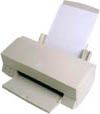The Linking Verb
Recognize a linking verb when you find one.
Linking verbs do not express action. Instead, they connect the subject of the verb to additional information about that subject.
Read these examples:
Keila is a shopaholic.
Ising isn't something that Keila can do. Is connects the subject, Keila, to additional information about her, that she will soon have a huge credit card bill to pay.
During the afternoon, my cats are content to nap on the couch.
Areing isn't something that cats can do. Are connects the subject, cats, to something said about them, that they enjoy sleeping on the furniture.
After drinking the old milk, Vladimir turned green.
Turned connects the subject, Vladimir, to something said about him, that he needed to find a bathroom quickly.
A five-item quiz seems impossibly long after a night of no studying.
Seems connects the subject, a five-item quiz, to something said about it, that its difficulty depends on preparation, not length.
Irene always feels sleepy after pigging out on pizza from Antonio's.
Feels connects the subject, Irene, to her state of being, sleepiness.
Depending on use, some verbs are both linking and action.
The following verbs are true linking verbs: any form of the verb be (am, is, are, was, were, has been, are being, might have been, etc.), become, and seem. These true linking verbs are always linking verbs.
Then you have a list of verbs with split personalities: appear, feel, grow, look, prove, remain, smell, sound, taste, and turn. Sometimes these verbs are linking verbs; sometimes they are action verbs.
How do you determine the difference?
If you can substitute am, is, or are and the sentence still sounds logical, you have a linking verb on your hands.
If, after the substitution, the sentence makes no sense, then you are dealing with an action verb instead.
Here are examples:
Sylvia tasted the spicy squid eyeball stew.
Sylvia is the stew? I do not think so! Tasted, therefore, is an action verb in this sentence, something that Sylvia is doing.
The squid eyeball stew tasted good.
The stew is good? You bet. Try a bowl!
I smell the delicious aroma of a mushroom and papaya pizza baking in the oven.
I am the aroma? No way! Smell, in this sentence, is an action verb, something that I am doing.
The mushroom and papaya pizza smells heavenly.
The pizza is heavenly? Definitely! Come smell for yourself!
When my dog Oreo felt the wet grass beneath her paws, she bolted up the stairs and curled up on the couch.
Oreo is the wet grass? Of course not! Here, then, felt is an action verb, something that Oreo is doing.
My dog Oreo feels depressed after seven straight days of rain.
Oreo is depressed? Without a doubt! Oreo hates the wet.
This substitution will not work for appear. With this verb, you must analyze its function in the sentence.
Compare these two examples:
As soon as the cat falls asleep, blue jays appear at the bird feeder.
Notice that are sounds good: Blue jays are at the bird feeder. But here appear is what the blue jays are doing, making this appear an action verb.
The blue jays appear happy to discover a bird feeder full of seed.
Here, appear is connecting the subject, blue jays, to their state of mind, happiness, making this second appear a linking verb.
©1997 - 2025 by Robin
L. Simmons
All Rights Reserved.
